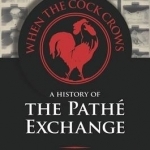When the Cock Crows: A History of the Pathe Exchange
BookThis item doesn’t have any media yet
2016 | History & Politics
Influential during Hollywood's silent-film era, the Pathe Exchange was a multinational film company with a production and distribution model very different from the self-contained units of most major studios. When the Cock Crows: A History of the Pathe Exchange, by Richard Lewis Ward, tells the unconventional story of this unique company, examining its triumphs and failures on the margins of the Hollywood system and its legacy in the movie business. Ward traces the company's turbulent evolution from its roots as an American distributor for Pathe Freres, its French parent studio, through its many subsequent changes in ownership, to its final years under the controversial leadership of Joseph P. Kennedy and the eventual merger of the company's production department with RKO. Included are the stories of the unlikely survival of Pathe's nonproduction assets, such as Pathe Industries, Inc., Pathe-America Distributing Co., Inc., and Pathe Communications Corporation, which continued to operate as part of the industry long after the Exchange had ceased to exist.
Ward also provides a fascinating glimpse into the silent movie era and the business and creative decisions that led the Exchange to fail. Film historians have largely ignored the Pathe Exchange, despite its having produced some of the most famous early serials (including The Perils of Pauline) and distributed the first films of comedy legends Harold Lloyd, Harry Langdon, Laurel and Hardy, and Our Gang. When the Cock Crows reveals the promise and peril of early Hollywood and establishes the company's vital place in film history, creating a more vivid picture of this era.
Related Items:
| Published by | Southern Illinois University Press |
| Edition | Unknown |
| ISBN | 9780809334964 |
| Language | N/A |
Images And Data Courtesy Of: Southern Illinois University Press.
This content (including text, images, videos and other media) is published and used in accordance
with Fair Use.
